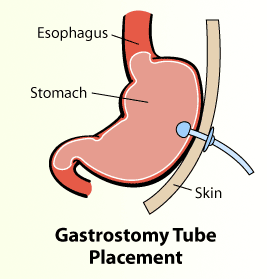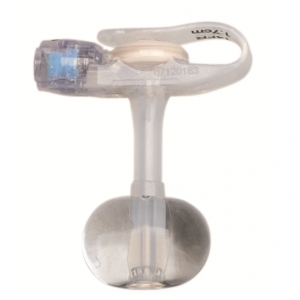People with certain diseases or medical conditions sometimes require that tubes be placed into the body so that they can receive medications or nutrients directly into the bloodstream or gastrointestinal system, or so blood can be drawn. “A complicated open surgery was required once, to insert these tubes, but its history now. Today these procedures can be done without surgery by an interventional radiologist which is safe and quick”, says
Sometimes the surgeon asks the family to meet with specialists, such as a gastroenterologist, dietitian, or social worker. This is to prepare a care plan so everything will be set up when the child goes home with the G-tube.
To get ready for the procedure, you will need to carefully follow instructions about when your child must stop eating and drinking. When you get to the hospital, the doctor will describe what will happen and answer any questions. The anesthesiology team will ask about your child’s medical history and when your child last ate and drank.

A feeding tube is a device that’s inserted into your stomach through your abdomen. It’s used to supply nutrition when you have trouble eating. Feeding tube insertion is also called percutaneous endoscopic gastrostomy (PEG), esophagogastroduodenoscopy (EGD), and G-tube insertion.
This treatment is reserved for when you have trouble eating on your own, due to reasons such as the following:
1) You have an abnormality of your mouth or esophagus, which is the tube that
connects your throat to your stomach.
2) You have difficulty swallowing or keeping food down.
3) You aren’t getting enough nutrition or fluids by mouth.
Gastrostomy tubes are feeding tubes placed through the abdomen into the stomach. Gastrostomy tubes are used to give children formula, liquids, and medicines. These tubes are placed by a pediatric Surgeon or by a Pediatric Gastroenterologist. A gastrostomy tube is placed one of two ways:
1) percutaneously
2) surgically.
At hospital discharge, a referral will be made to have a nurse visit your home. The nurse will help you care for the gastrostomy tube and give feedings and medications and, in general, serve as a resource in your home.
Percutaneous Endoscopic Gastrostomy (PEG) Tube
A PEG Tube, or Percutaneous Endoscopic Gastrostomy tube, is placed by a Pediatric Gastroenterologist in the operating room. The PEG tube is inserted using a telescopic instrument, called an endoscope. The endoscope is a small tube with a light and camera on the end that lets the Gastroenterologist see into the esophagus (food tube) and stomach. The endoscope allows the doctor to choose the best location in the stomach to place the PEG tube. Once the location is chosen, a small opening is made on the outside of the abdomen into the stomach. After the opening is made, the top part of the PEG tube is pulled up out of the stomach through this opening. The top of the tube rests on the skin and the bottom part of the PEG, which is shaped like a bulb, remains inside the stomach. This bulb shape anchors the tube in the stomach and prevents it from coming out.
After the PEG tube is placed your child will be admitted to the hospital for observation and care. The hospital stay is usually three days. Prior to the procedure, an IV (intravenous line) will be placed in the operating room. This will be used to give fluids, antibiotics, and pain medication, for one to two days, as your child is recovering. Feedings will be started through the PEG tube within one or two days.
The PEG tube which is made of silicone must stay in the stomach for about three months to allow the tract (hole) to heal between the abdomen and the stomach. The tract must be well healed so it is safe for the gastrostomy tube to be changed.
Surgically Inserted Gastrostomy Tubes
The pediatric surgeon places a gastrostomy tube in the operating room under general anesthesia. This operation is done through a small incision (cut) on the abdomen. The surgeon may place a temporary tube, called a Malecot®, into the gastrostomy opening. The Malecot® will be stitched to the skin and left in place for several weeks. The Malecot® allows the gastrostomy tract to heal well before a ballon type gastrostomy tube is inserted. A Malecot® tube is about twelve inches long, and most of the tube extends out of the abdomen.
After the gastrostomy tube is placed your child will remain in the hospital for observation and care. An IV (intravenous line) will be placed in the operating room before the procedure and this will be used to give fluids, antibiotics, and pain medications while your child is recovering. Feedings are usually started the day after the gastronomy is placed.

